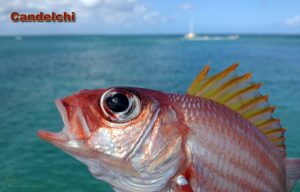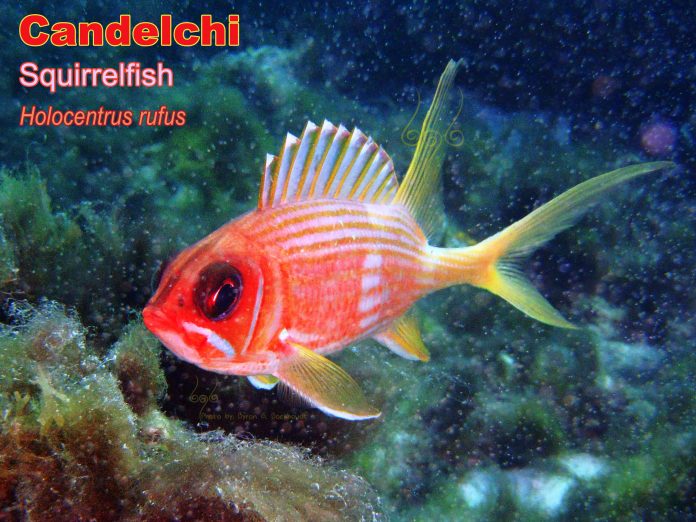(Oranjestad)—If you’re ever planning on snorkeling during your vacation on Aruba, you may spot fish that you can’t recognize. One of these may be the “Candelchi” (Squirrelfish), a common, yet shy fish that swims all year long in the waters of Aruba.

Let’s talk about the names of fish. Do you know your fish? The Department of Department of Agriculture, Livestock, and Fisheries, known as Santa Rosa, offers this informative article that illustrate some fish and their names in Papiamento.
Candelchi, Squirrelfish, Holocentrus adscensionis:
Candelchi actually refers to the entire squirrelfish family or, as some say, when we say candelchi, we mean several different species but without distinguishing them by species. In this picture, we are showing the most common one in our waters, which is called squirrelfish in English or scientifically known as Holocentrus adscensionis.
Under candelchi, we in Aruba generally refer to all the different species of squirrelfish. They all look alike and it’s really difficult to distinguish between them.
The squirrelfish family is distinguished by the following characteristics. They are heart-shaped with pink or red hues and often show heart-shaped streaks between the scales along the body. They have hard fins and are always armed. Over at our sister island Curaçao, they are called “bari di clabo” (nail barrel) for that reason.
In our waters, there are 7 to 8 types or species present and they are sometimes caught and seen occasionally. They can be distinguished by different marks such as color on the dorsal spine or marks on the body.
In Aruba:
Candelchi are found on reefs or areas with structure in the water where they can hide. Although they prefer to hunt for food at night, they are also active during the day. They are edible and delicious when prepared dry and crispy with lime. It is particularly challenging to scale the fish, which is why it is not one of the favorites among fishermen. They often live in groups.




















